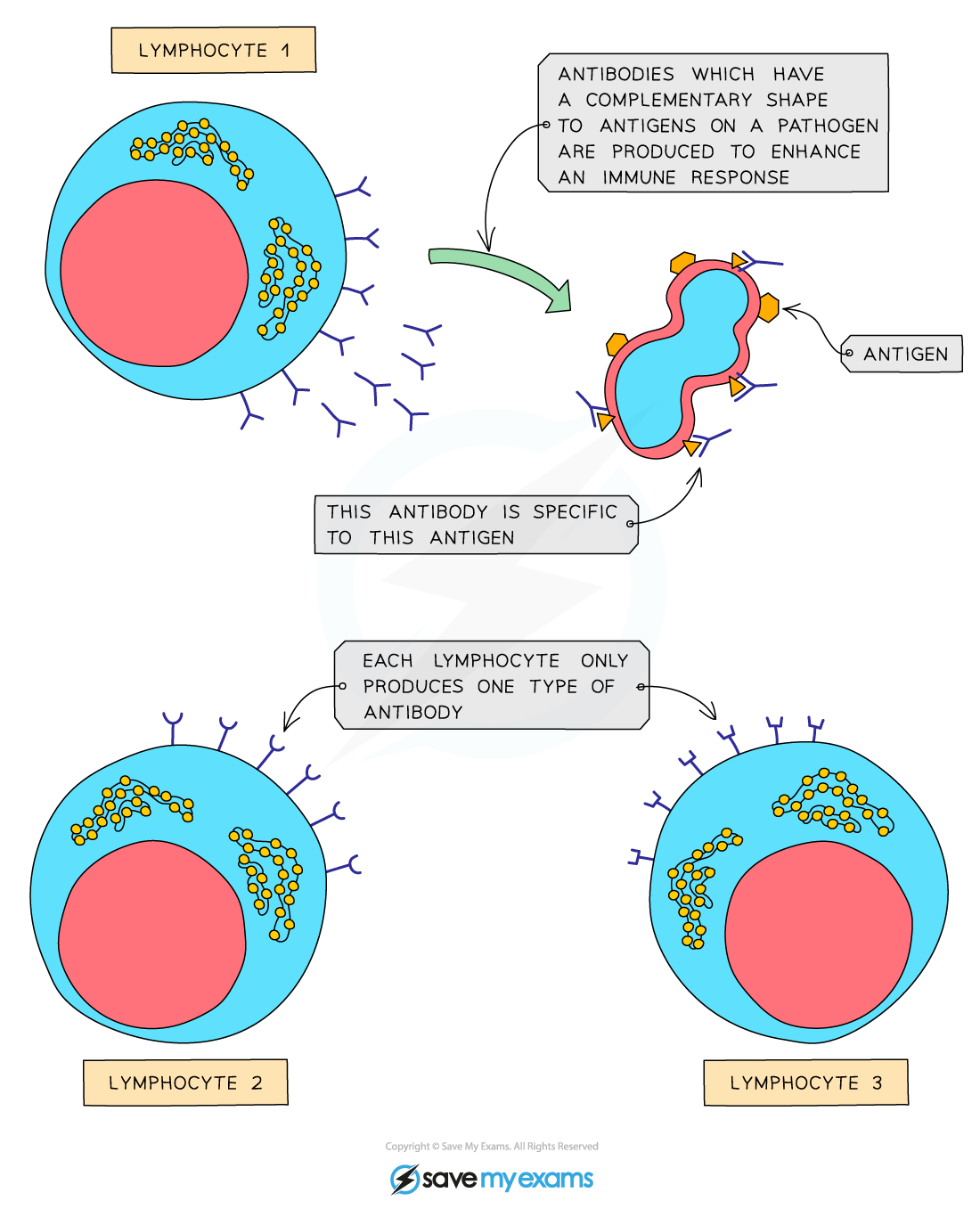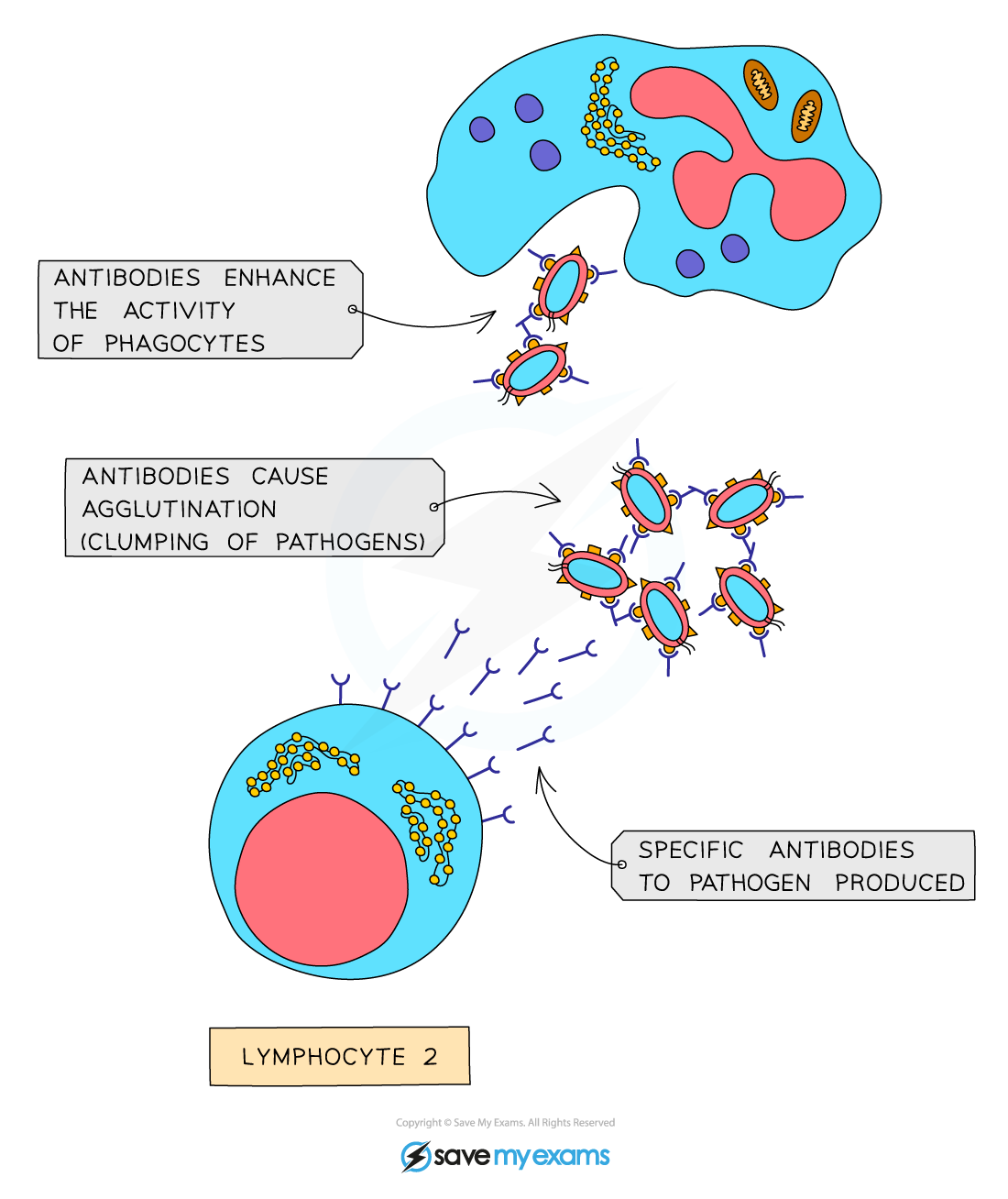- 翰林提供学术活动、国际课程、科研项目一站式留学背景提升服务!
- 400 888 0080
CIE IGCSE Biology: 复习笔记:10.1.4 Antigens & Antibodies: Extended
CIE IGCSE Biology: 复习笔记:10.1.4 Antigens & Antibodies: Extended
Antigens & Antibodies: Extended
- All cells have proteins and other substances projecting from their cell membrane
- These are known as antigens and are specific to that type of cell
- Lymphocytes have the ability to ‘read’ the antigens on the surfaces of cells and recognise any that are foreign
- They then make antibodies which are a complementary shape to the antigens on the surface of the pathogenic cell

Antigens and antibodies
- The antibodies attach to the antigens and cause agglutination (clumping together)
- This means the pathogenic cells cannot move very easily
- At the same time, chemicals are released that signal to phagocytes that there are cells present that need to be destroyed
 Agglutinated pathogens cannot move easily
Agglutinated pathogens cannot move easily
- The initial response of a lymphocyte encountering a pathogen for the first time and making specific antibodies for its antigens can take a few days, during which time an individual may get sick
- Lymphocytes that have made antibodies for a specific pathogen for the first time will then make ‘memory cells’ that retain the instructions for making those specific antibodies for that type of pathogen
- This means that, in the case of reinfection by the same type of pathogen, antibodies can very quickly be made in greater quantities and the pathogens destroyed before they are able to multiply and cause illness
- This is how people can become immune to certain diseases after only having them once
- It does not work with all disease-causing microorganisms as some of them mutate fairly quickly and change the antigens on their cell surfaces
- Therefore, if they invade the body for a second time, the memory cells made in the first infection will not recall them as they now have slightly different antigens on their surfaces (e.g. the cold virus)
转载自savemyexams

早鸟钜惠!翰林2025暑期班课上线

最新发布
© 2025. All Rights Reserved. 沪ICP备2023009024号-1








